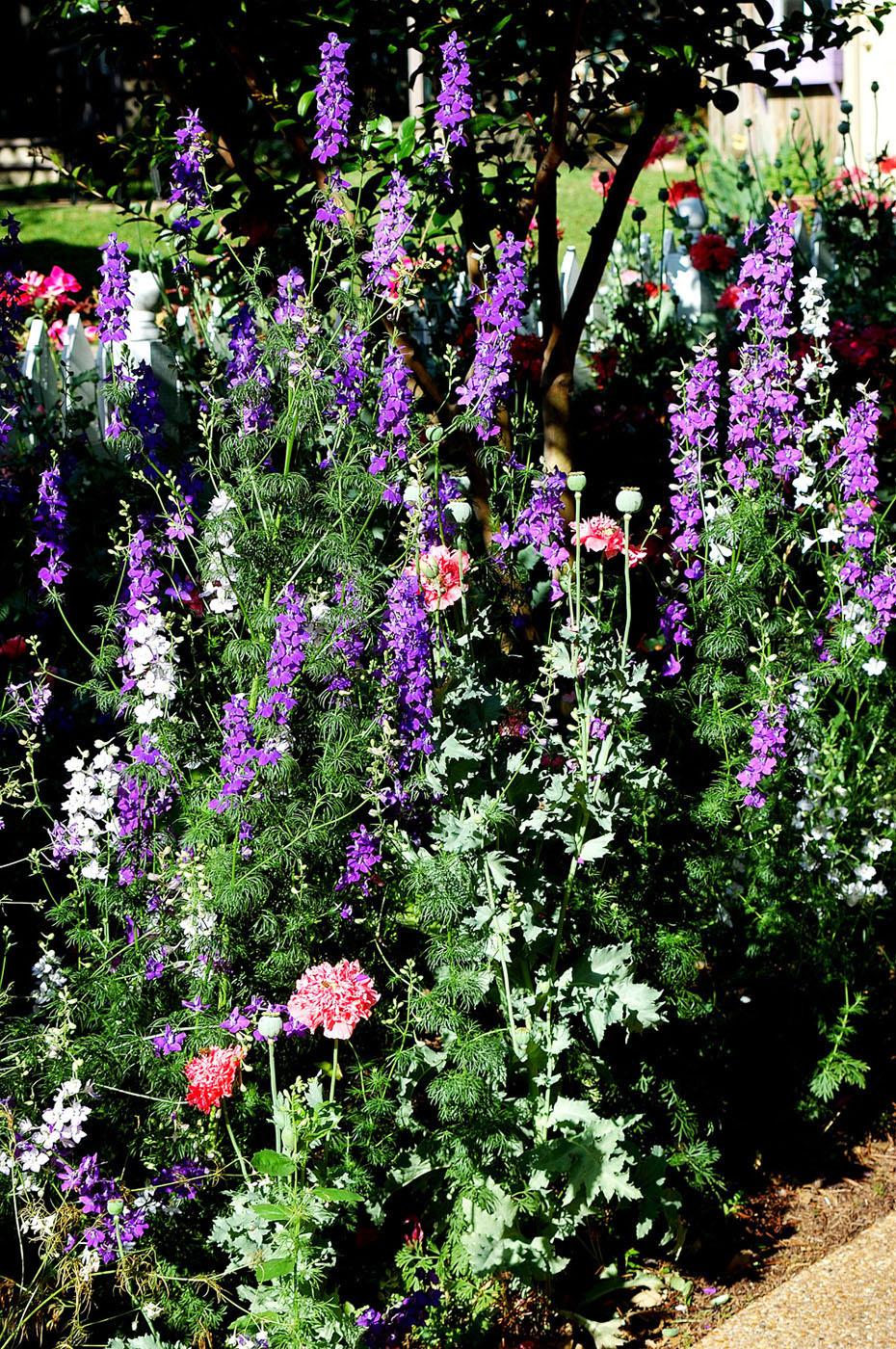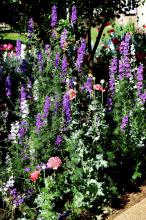Information Possibly Outdated
The information presented on this page was originally released on May 22, 2008. It may not be outdated, but please search our site for more current information. If you plan to quote or reference this information in a publication, please check with the Extension specialist or author before proceeding.
Larkspurs yield incredible displays across the South
By Norman Winter
MSU Horticulturist
Central Mississippi Research & Extension Center
The South is alive with incredible displays of larkspurs, and it is time to revel in their beauty. Normally, I write about plants that should be going into the ground right then or some that would make excellent additions to landscapes. This week is a good time to enjoy larkspurs and contemplate where you can make great use of this reseeding annual.
I was on my way to give a seminar recently and decided to visit one of my favorite cottage gardens in Kosciusko. Magnificent larkspurs, poppies and even salvias kept the spiky texture alive and well, creating garden excitement.
Botanically speaking, the old-fashioned larkspur is Consolida ajacis, formerly Consolida ambigua. The time to plant is not when we see them blooming in the garden. By the time spring is over and we have endured summer temperatures, we have forgotten about larkspurs. We start thinking about the fall garden with its mums, pansies and dianthuses. But late summer is the time to plan for the next spring if you want to enjoy larkspurs.
Larkspurs come in shades of blue, pink and white. They stand tall and erect, reaching 4 feet in height. They are perfect partners for white picket fences and at the top of the list of cottage garden plants. They work well mixed with annuals and perennials, or against a backdrop of roses of any type, especially climbers.
You are no doubt seeing them in your own hometown, especially at the homes of good gardeners -- those who perhaps are a little more seasoned and who relish digging in the dirt.
The right time to plant larkspurs is late summer and early fall. One mistake many gardeners make, besides planting too late, is planting too deeply. Many scientists suggest that larkspurs need light to germinate. To get them going in your garden, lightly plant seeds on top of loosened, well-drained soil, and tamp with a garden hoe. The cool rains of fall will cause the seeds to germinate and form small plants. These tiny plants can be transplanted in late winter or very early spring if handled with care.
The young plants will establish themselves with good root development during the winter and will put on a show next spring that will make your garden the envy of your neighbors.
The larkspurs' spring bloom gives several great choices for combination plantings. In addition to the poppies and salvias mentioned above, coreopsis varieties make terrific partners. The bright gold of the coreopsis looks exceptional with the blue-flowered larkspurs. Ox-Eye daisies, yarrows and hollyhocks, which also take planning, are nice companions in the landscape.
Once you get larkspurs started, you will have them around for years to come because they reseed -- quite prolifically, I might add. I have seen beautiful flowers growing in the cracks of sidewalks.
Some gardeners frown at the thought of reseeding annuals, but I consider them a blessing. Thin larkspurs to about 12 inches to allow for best garden performance.
With a plant as pretty as the larkspur, the sadness does not come from plucking unwanted seedlings but with the end of their bloom. It will be even sadder if, this time next year, you are still enjoying other people's larkspurs without having a patch of your own.



